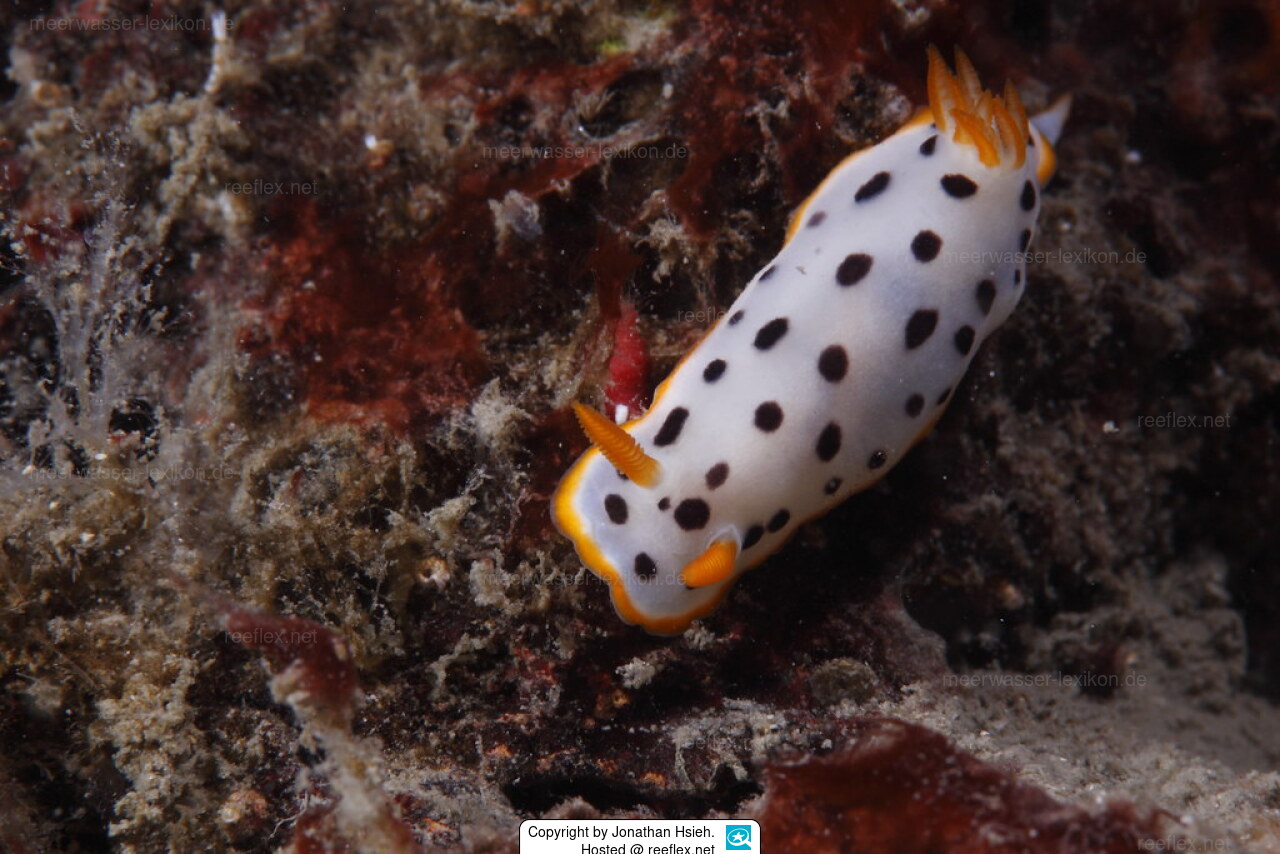Info
Chromodoris orientalis Rudman, 1983
Chromodoris orientalis is translucent white with oval black spots on the mantle. The edge of the mantle has a narrow orange border and the rhinophore clubs and outer gill surfaces are orange. Die Prachtsternschnecke befestigt ihr Laichband flach auf dem Substrat und nicht hochkant.
Chromodoris orientalis feed on sponges, hydroids, bryozoans, entoprocts, and ascidians.
Similar to Hypselodoris placida (have submarginal band of blue patches).
Chromodoris orientalis is translucent white with oval black spots on the mantle. The edge of the mantle has a narrow orange border and the rhinophore clubs and outer gill surfaces are orange. Die Prachtsternschnecke befestigt ihr Laichband flach auf dem Substrat und nicht hochkant.
Chromodoris orientalis feed on sponges, hydroids, bryozoans, entoprocts, and ascidians.
Similar to Hypselodoris placida (have submarginal band of blue patches).







 Jonathan Hsieh
Jonathan Hsieh





































